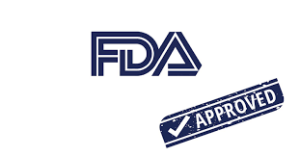HACCP (Hazard Analysis And Critical Control Points) : Seven Principles

A process control method called Hazard Analysis and Critical Control Points (HACCP) is designed to find and eliminate microbiological and other dangers in the food manufacturing process. HACCP systems should be founded on seven principles, as stated by the NACMCF. Among these seven guidelines are:
(1) Risk assessment,
(2) Identification of critical control points,
(3) The setting of crucial limitations,
(4) Monitoring techniques,
(5) Remedial measures,
(6) Maintaining records, and
(7) Verification
The HACCP Seven Principles
Principle 1: Conducting a danger analysis is the first principle. Plants analyse the risks to food safety during this phase and identify preventive methods to control these risks.
Principle 2: Finding crucial control points is the second principle. A critical control point (CCP) is a stage in the manufacturing of food where measures are taken to prevent, eliminate, or minimize the risk to a level that is acceptable for food safety.
Principle 3: Establish critical limits for each important control point, according to principle 3. A physical, biological, or chemical hazard must be kept under control at a particular value known as a critical limit. CCP distinguishes between safe and harmful food while also preventing, eliminating, or reducing risk to a tolerable level. Notably, critical limits typically take the form of numerical numbers based on scientific discoveries.
Principle 4: Establish the criteria for critical control point monitoring (principle 4). To ensure that the process is in control at each crucial control point and that dangers are likewise under control, the food manufacturing process must be monitored. The monitoring process comprises measurements of temperature, visual inspection, timekeeping, etc. Each process must be monitored, and the FSIS stipulates that the frequency of monitoring must be specified in the HACCP plan.
Principle 5: The fifth principle is to take corrective action. Corrective measures must be performed to stop the hazard if deviations are found during the monitoring phase. Corrective measures make sure that contaminated products that are harmful to health do not reach the market.
Principle 6: Establish record-keeping methods according to principle 6. All plants must maintain records detailing hazard analysis, CCP monitoring, critical limits, and process deviation checks in accordance with HACCP requirements.
Principle 7: Establish processes for verification. The HACCP plan’s validity and the system’s compliance with the plan can both be ascertained through verification.
Verification examines whether the HACCP system at the facility is operating in accordance with the HACCP plan on the one hand, and validates the HACCP plan on the other to establish that the plan is technically and scientifically sound. Additionally, the initial process validation confirms that all risks have been identified and guarantees that, if the HACCP plan is appropriately implemented, these risks will be successfully limited.










